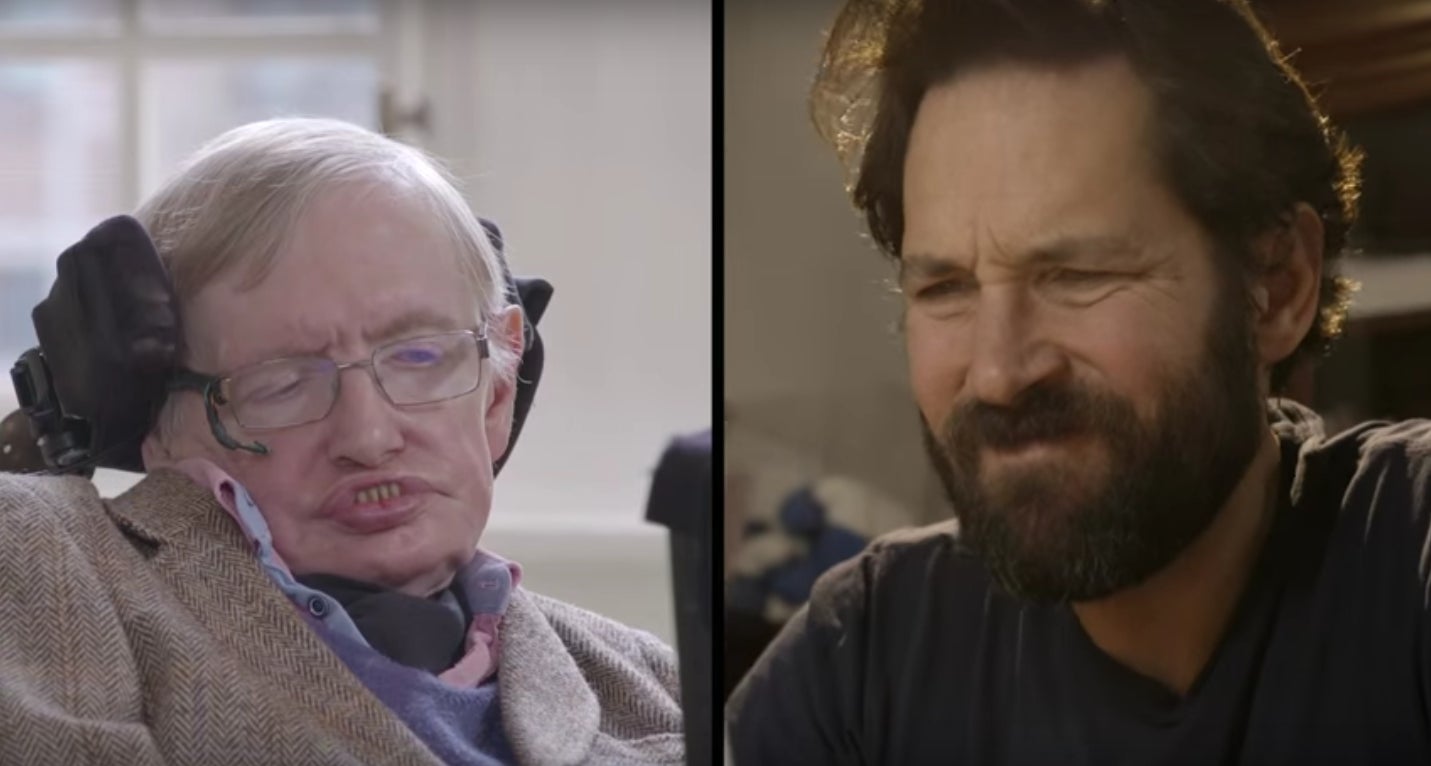Watch Stephen Hawking call Paul Rudd a nerd in this mythic game of “quantum chess”
Here’s something you don’t see everyday: a famed theoretical physicist taking on a popular American actor in an epic chess match. But it’s not any old game of chess—this is quantum chess. Normal chess is hard enough to master, but it becomes another beast entirely when you start applying the laws of quantum mechanics to the pieces.


Here’s something you don’t see everyday: a famed theoretical physicist taking on a popular American actor in an epic chess match. But it’s not any old game of chess—this is quantum chess. Normal chess is hard enough to master, but it becomes another beast entirely when you start applying the laws of quantum mechanics to the pieces.
In a goofy short film, Paul Rudd—who’s no stranger to the quantum realm, having starred as Marvel’s bite-sized superhero Ant-Man—challenges Stephen Hawking to a game of quantum chess. It’s a comeback for the ages.
The film was shot to promote “One Entangled Evening”, an event Tuesday night (Jan. 26) hosted by the Caltech Institute for Quantum Information and Matter. The event celebrated the legacy of Richard P. Feynman, a former Caltech professor who won the Nobel prize for his research into the theory of quantum electrodynamics.
Oh, and the video is narrated by Keanu Reeves, who’s pretty familiar with physics himself, as one half of the time-traveling duo in Bill & Ted’s Excellent Adventure. (Alex Winter, the “Bill” to Reeves’ “Ted”, directed the video, and makes a quick cameo appearance.)
If only this were real.
Perhaps, though, it soon will be. The quantum chess game in the video is actually a real thing being developed by Chris Cantwell, a graduate student at the University of Southern California.
Quantum mechanics—the physics of very, very small things (like atoms)—is a difficult for us plebeians to grasp, but here’s a stab at it. Its core principle, as demonstrated in the video, is something called “superposition,” which says that particles can exist in multiple states simultaneously.
“It sounds terrible, but it really isn’t,” Max Abitbol, a PhD candidate in physics at Columbia University, tells Quartz. Here’s Abitbol’s explanation of what’s happening in the chess match:
Let’s say that the position of a particle can described by something called its “wavefunction.” The superposition principle says that any arbitrary wavefunction is equal to some specific combination of states. We generally don’t know what the wavefunction is—but you do know what the states are, and so you can use them to describe the wavefunction.
In the chess game, they’ve created a quantum system in which the squares are “states”, the pieces are particles, and the wavefunction of each piece is a combination of possible squares (a superposition). It might feel intuitively wrong to say the chess piece is simultaneously in two squares—or in neither square—but here’s another way to think about it: Each piece has a wavefunction, which you can describe by adding the two squares together. If you attack one of those squares with another piece, you’re determining how much (what probability) of the particle is in that square.
If you’re still not getting it, this video might help: